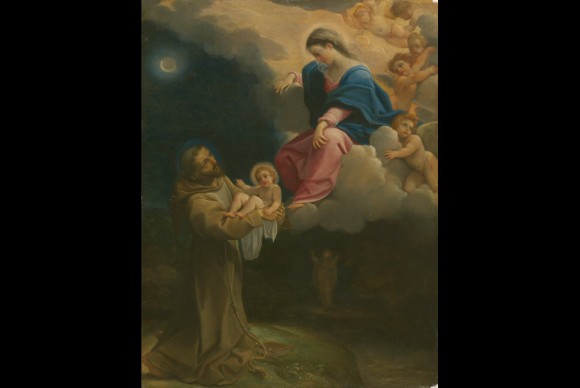Art Institute of Chicago Announces Major Acquisition of an Early 17th Century Painting
CHICAGO, IL.- The Art Institute of Chicago announce a major acquisition of an early 17th-century painting by Ludovico Carracci, The Vision of Saint Francis (c. 1602). The work, acquired by the Department of Medieval through Modern European Painting and Sculpture at the museum, is the first painting by Ludovico Carracci to enter the collection. While the museum does hold a generous amount of works on paper by Ludovico and his cousins Annibale and Agostino, generally recognized as the artists who transformed Italian painting at the turn of the 17th century, The Vision of Saint Francis is the first painting by a Carracci to become part of the Art Institute’s permanent collection. This intimate, emotionally charged oil on copper painting, depicting a tender vision of Saint Francis, is now on view in Gallery 212A at the museum.
“We are thrilled to add this singular example of 17th-century Bolognese painting to our permanent collection,” said Douglas Druick, Searle Chair of the Department of Medieval through Modern European Painting and Sculpture at the Art Institute of Chicago. “Already at the Art Institute we are fortunate to possess many important works of Carracci’s contemporaries–from Guido Reni’s Salome with the Head of Saint John the Baptist, to Guercino’s Entombment, to Albani’s Virgin and Child Adored by Saint Francis. This stunning copper by Ludovico reveals the naturalistic underpinnings of 17th-century Bolognese painting, thereby complementing and greatly enhancing our collection of early modern Italian art.”
Ludovico Carracci was born in Bologna in 1555 and received his early training in the Mannerist tradition. At age 22, he was admitted as a master painter in Bologna’s Corporazioni dei Pittori and traveled extensively throughout Italy to study the art produced in other cities. Upon his return, Ludovico and his cousins founded an academy of drawing (Accademia degli Incamminati ), where the Carracci family executed drawings from live models and Ludovico served as the director. The Carracci family was largely responsible for transforming Bolognese painting from the staid and restricted Mannerist style of the latter part of the 16th century into the compelling blend of classicism inflected with naturalistic elements that would dominate 17th-century Italian painting. Thus the Carracci–with Ludovico, the eldest, at the helm–represent a revolutionary current in the history of art.
The Vision of Saint Francis is an exquisitely rendered oil on copper painting depicting a subject that was not represented in Italian painting until the last quarter of the 16th century. The scene comes from the medieval chronicles of Saint Francis and is divided into two parts: the heavenly realm, inhabited by the Virgin and putti who reside on and around substantive cloud formations, and the earthly sphere, composed of the kneeling Saint Francis and the Christ child in a carefully articulated naturalistic setting with a wide winged angel who emerges from the background of the terrestrial realm. Light pervades the picture in three beautifully realized modes: celestial light infuses the heavens with a warm glow; the moon sheds light on the nocturnal scene of Saint Francis; and the figures of Saint Francis, the Virgin, and the Christ child in turn radiate their own sacred light in the form of haloes.
The Vision of Saint Francis is one of 16 known paintings on copper by Ludovico Carracci, many of which are in private collections. As a result, the public has had little opportunity to view such a seminal work. With The Vision of Saint Francis , the Art Institute is now more fully able to tell the story of Italian painting, which in the 17th century moved away from Mannerism to a naturalistic and classical style that would dominate Italian painting into the 18th century.
Related posts:
- Art Institute of Chicago Announces Significant Acquisition of Seminal Kazimir Malevich Painting
- Art Institute of Chicago’s Modern Wing Awarded Silver LEED Certification
- Art Institute of Chicago Appoints New Chief Operating Officer
- The Art Institute of Chicago Delves into Richard Hawkins’s Third Mind for Major Retrospective
- 17th-Century Spanish Sculpture, by Juan Martínez Montañés, Acquired by the Toledo Museum of Art

